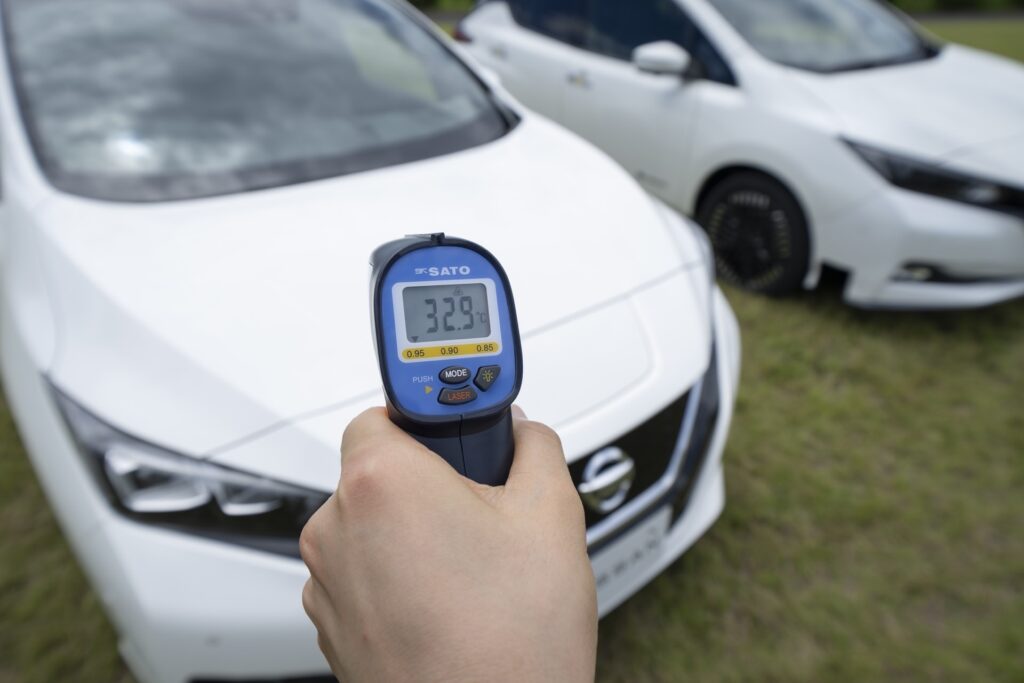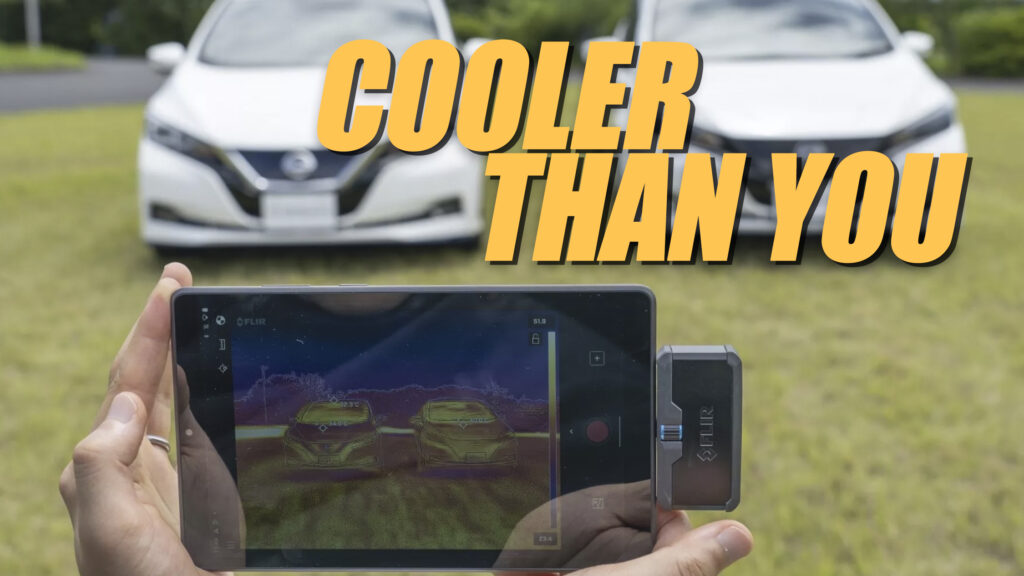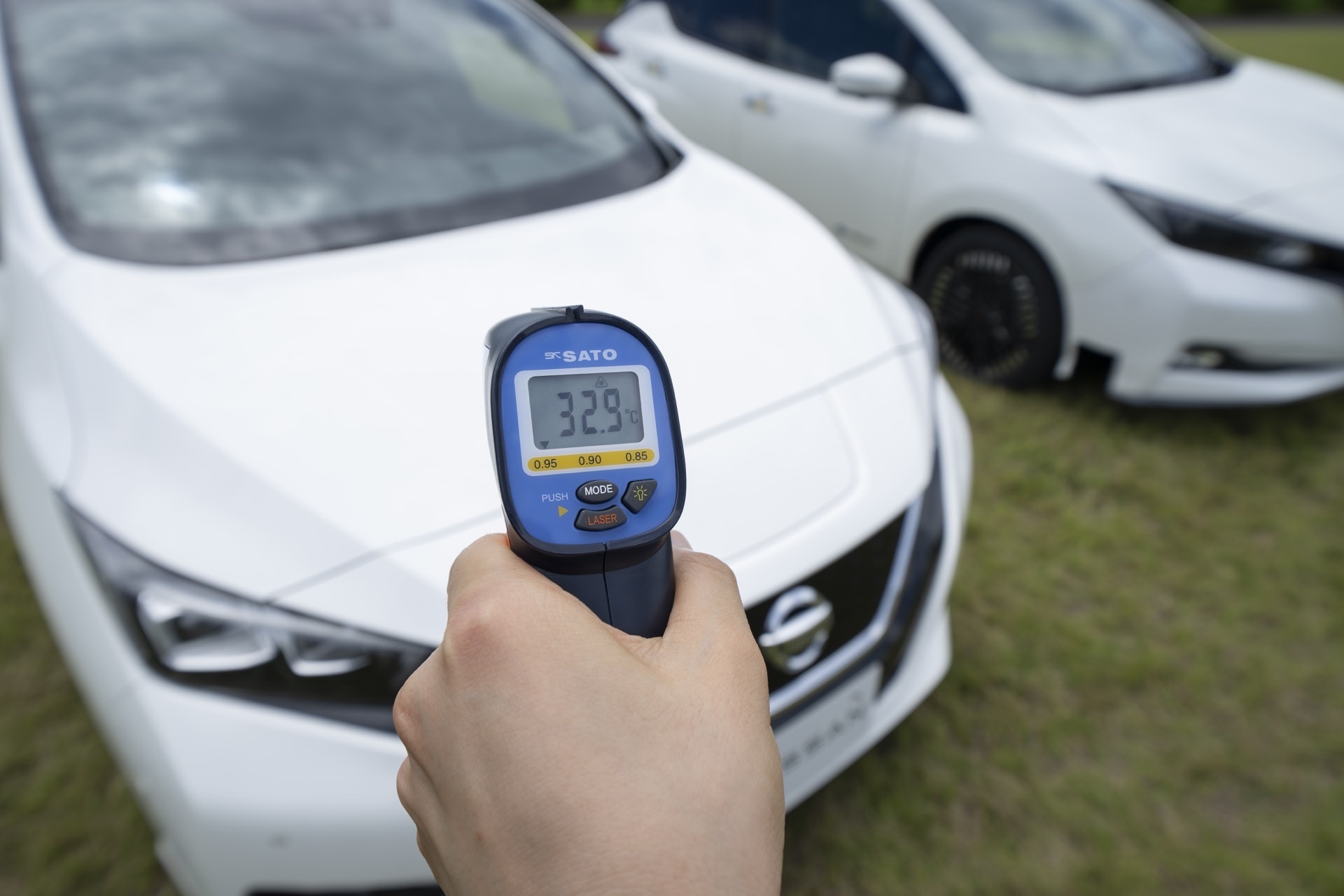- Nissan, in collaboration with Radi-Cool, has developed a new paint that can reduce external temperatures by as much as 22 degrees Fahrenheit.
- The new paint has been designed to reflect near-infrared rays, as well as creating electromagnetic waves that counteract the sun’s rays.
- The paint is still too thick to be commercially viable, but Nissan techs hope to see it in use in the near future.
While we’d wager that the majority of new car buyers choose their colors based on looks, if you’re from an area that enjoys year-round sun, you’ll likely have heard the advice to avoid dark-colored cars. The conventional wisdom is that black or dark shades of paint, when applied to cars, will increase interior temperatures when left out in the sun.
However, Nissan, together with Radi-Cool, a Chinese company that specializes in developing passive cooling products, has decided to improve the way a car’s exterior paint can aid cooling. The quest to create a “cooler” paint job commenced in 2021, with over 100 samples being developed and evaluated.
Read: World’s White Paint Reflects Heat And Can Now Be Used On Cars
Finally, in November 2023, a 12-month feasibility study started at the Tokyo International Air Terminal at Haneda. It involves applying the paint to All Nippon Airways’ (ANA) Nissan NV100 ground vehicles. The airport, with its wide open spaces and large tarmac aprons, was deemed the perfect environment to test the performance of the new paint.
According to Nissan, the paint has proven to be a success. When parked side-by-side under the sun, a car that has been finished with the new paint is virtually cool to the touch, with a 21.6-degree Fahrenheit reduction in exterior temperature. The interior temperature, crucial for comfort and reducing air conditioning load, was recorded as being up to 9 degrees Fahrenheit cooler than cars coated in conventional paint.

The key to the paint’s cooling properties is the use of metamaterials. Metamaterials are engineered to have a property that is rarely observed in naturally occurring materials. One particle in Nissan’s new paint reflects near-infrared rays. These rays would normally cause vibrations in traditional car paint (at a molecular level), which causes it to heat up. Meanwhile, a second particle creates electromagnetic waves that counteract the sun’s rays, redirecting the heat away from the car’s surface and back into the atmosphere.
Read: Hyundai Nano Cooling Film Can Reduce Interior Temperatures By Up To 40° F
While heat-reflecting paints are commonly used in other applications, such as buildings, many have to be applied by a roller and will not leave the same finish that’s required for a modern automobile. These applications don’t need a clearcoat layer either, something that is commonplace on cars. Nissan’s newly developed paint can be applied via a spray gun and can incorporate the required clear topcoat.
However, there are still some challenges to overcome before this paint can be used commercially, chief of which is that the cool paint is still six times thicker than regular automotive paint. However, the team behind the new tech is confident in future applications and hopes that it can soon be offered for special orders in a variety of colors.
Nissan isn’t the only one working on this kind of tech. A team from Purdue University has helped develop white paint with a solar reflectance of 97.9 percent, which was announced back in 2022. Other manufacturers, such as Toyota, have also dabbled in passive-cooling exterior paint jobs, and Hyundai have showed off their own Nano Cooling film.
















































